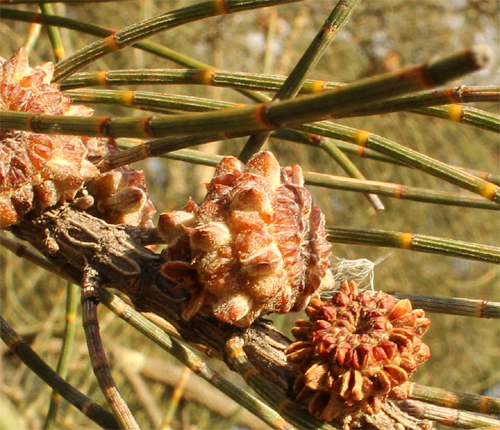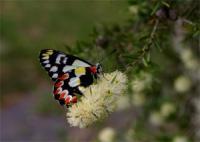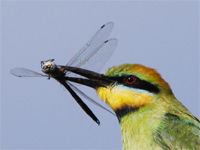Buloke Allocasuarina luehmannii is an uncommon tree that can be found in two different habitats in our district – on the red volcanic soils of the Moolort Plains, where it was once very common and sparsely scattered throughout the box-ironbark country. I came across a small stand this evening in the Sandon State Forest near Strathlea and was pleasantly surprised to see a number of the female trees with a good seed crop. Buloke is an unusual plant in that the male and female flowers are found on separate trees. The male flowers form a mass of orange stamens at the tip of the branchlets, while the female flowers form a dense tuft of red styles along the branchlets.
Bulokes certainly don’t flower and set seed successfully every year from my experience. The female trees in this grove were at different stages of fruit maturity – the cones on the tree above were still quite green while those pictured below had actually started to shed their seed.
Fallen Buloke seeds don’t stay viable for long and successful germination hinges on heavy rainfall in mid to late summer. This tends to be a very rare event and ideal conditions for regeneration may only occur every few decades. This aspect of their ecology combined with a long history of exploitation for firewood and building materials, such as shingle roofing, means that Buloke is now regarded as a threatened species.














